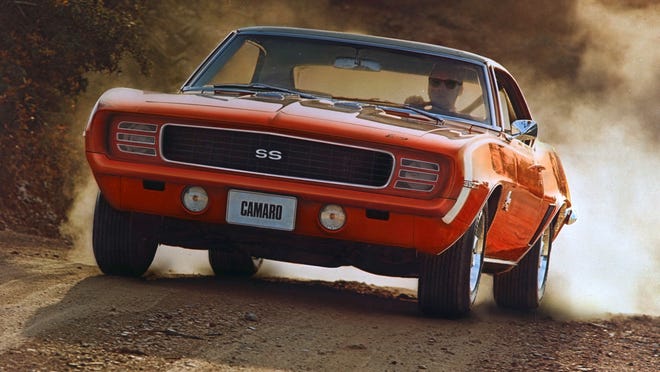And then there was one.
Detroit’s muscle car lineup shrank to the Ford Mustang on Wednesday as Chevrolet announced the end of Camaro production after the 2024 model year. The Camaro’s demise follows the discontinuation of Dodge’s popular Challenger coupe at the end of this year. V8-powered cars like the Camaro are under intense regulatory pressure amid a government-led transition to electric vehicles, but — unlike the best-selling Challenger — Camaro had fallen on hard sales times since its sixth-generation remake in 2016.
“As we prepare to say goodbye to the current generation Camaro, it is difficult to overstate our gratitude to every Camaro customer, Camaro assembly line employee and race fan,” said Chevy Vice President Scott Bell. “While we are not announcing an immediate successor today, rest assured, this is not the end of Camaro’s story.”

The end may be a new beginning. Car and Driver reports that General Motors Co. is moving towards a sub-brand strategy focused on Camaro, Corvette and Escalade as the company remakes its portfolio. The enthusiast magazine reports that a Camaro SUV will be introduced in 2025 on GM’s Ultium battery platform just as a Corvette sub-brand unveils an Ultium-based SUV and sedan to complement its V8-powered sports car.
Ford pioneered the muscle-car sub-brand idea in 2021 with the electric Mustang Mach-E and Ford credits its success in racking up emissions credits for the continuation of the V8-powered Mustang.
“We’re not saying anything specific right now,” Chevrolet spokesman Trevor Thompkins told the Associated Press about Camaro’s future.
The Camaro debuted in 1967 in the wake of the wildly successful Mustang pony car. Though shy of Mustang’s massive 470,000-plus sales, the Camaro sold an impressive 220,906 units in its inaugural year and continued strong sales into the 1970s as the muscle car segment grew to include such Woodward Dream Cruise classics as its sister Pontiac Firebird, Dodge Challenger, AMC Javelin and Plymouth Barracuda. By its fourth generation in 2002, sales of the Camaro had dropped to just over 40,000 units a year and the model was discounted.
Camaro rose from the ashes in 2010 with a fifth-generation coupe that was part of a rebirth of the American muscle car segment. It outsold both the Mustang (which has been sold continuously since 1964) and the Challenger (reborn in 2008) for five straight years, hitting nearly 90,000 units annually on the strength of its edgy retro styling and RS, SS and Z/28 performance models.
A controversial sixth-generation redesign in 2016 ended the Camaro’s reign at No. 1. Sharing the same athletic platform as the Cadillac ATS, the Camaro won huzzahs for its performance — embodied by the 650-horsepower ZL1 1LE, the fastest Camaro ever around GM’s Milford Proving Grounds.
But buyers and media reviews complained the sports car was hard to see out of and was ergonomically inefficient inside. Sales sank to 24,652 last year — a distant third to its Mustang and Challenger competitors.
Challenger will also cease production after the 2024 model year as Dodge has racked up heavy federal emissions fines. Dodge has introduced an all-new, battery-powered Charger Daytona Banshee to replace it.
Camaro is synonymous with Chevy NASCAR racing and the badge will continue competing in the series as well as in IMSA, SRO, NHRA and the Supercars Championship.

“Chevrolet’s products and our relationship with our customers benefit from motorsports,” said Chevy Motorsports boss Jim Campbell. “Our plan is to continue to compete and win.”
As Camaro production draws to a close at GM’s Lansing Grand River Assembly Plant in January 2024, Chevrolet said it will honor its final run with a Collector’s Edition package on the RS, SS and ZL1 models. The Collector’s Edition pays homage to the first generation program’s initial code name: Panther.
Henry Payne is auto critic for The Detroit News. Find him at hpayne@detroitnews.com or Twitter @HenryEPayne.
